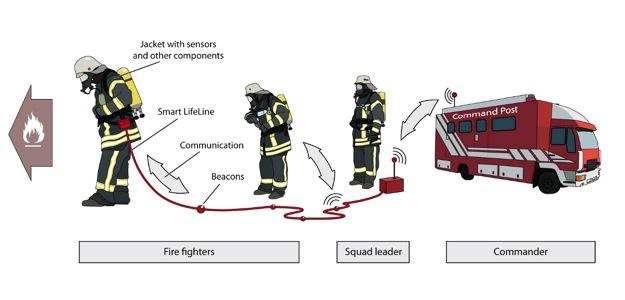 It’s hard to discredit the genuine bravery of firefighters. After all, their job regularly requires them to run into burning buildings and ensure that as little damage as possible – to the building or anyone inside – occurs. It’s a career that doesn’t just inspire bravery but demands it – consider the number of times firefighters walk into a situation essentially blind, with no idea of what’s awaiting them on the other side of the door.
It’s hard to discredit the genuine bravery of firefighters. After all, their job regularly requires them to run into burning buildings and ensure that as little damage as possible – to the building or anyone inside – occurs. It’s a career that doesn’t just inspire bravery but demands it – consider the number of times firefighters walk into a situation essentially blind, with no idea of what’s awaiting them on the other side of the door.
To give them a little extra vision, scientists have come up with a way that might remove some of those particularly dangerous unknowables.
Researchers at the University of Vienna in Austria have created something called ProFiTex, which uses information collected from specially-modified firefighter helmets to build a virtual map of any environment. This will allow firefighting crews to have a better idea of just what’s around the corner (both literally and metaphorically) in each new situation.
In-helmet heat sensors can monitor the temperature around a firefighter, while a helmet-mounted camera can feed images of the environment back to those outside of the fire so correspondents can weigh in on any potential decisions via radiolink. The system can also provide additional information displayed inside the helmet, says ProFiTex lead researcher Hannes Kaufmann.
“A [physical environment] can be invisible for the firefighter [as the result of darkness or smoke], so we give him a model which is visible, and we enhance it with thermal data,” Kaufmann told New Scientist, who said that the system can “basically reproduce the real environment virtually” if necessary. “If a room wall [appears on the display as] dark red from the outside, then it’s dangerous inside.”
Kaufmann presented a paper on ProFiTex at last March’s Augmented Human conference in Stuttgart, Germany, and he and his team already have ideas on how to improve the system to make it even more useful for firefighters. The team currently plans to research just how much additional information can be displayed for firefighters in the actual environments before it becomes either overwhelming or distracting. Additionally, they want to look into how infrared lasers could be used to cut through smoke-filled rooms and offer more detailed information on even the most densely smoke-filled environments.
Undoubtedly, the idea of rolling out such technology on a wide scale would be an expensive proposition. However, there’s no denying that the potential to improve the chances of success for firefighters with this kind of information is worth it.
Editors' Recommendations
- The Future of Vision: Augmented reality contact lenses will make you bionic
- Thermal AR glasses give screening for possible coronavirus a high-tech twist
- AR contact lenses are here to usher in the cyberpunk future of our dreams
- Think your house is smart now? Here’s a peek at what it’ll be like with AR
- Magic Leap in trouble? Report says only 6,000 AR headsets sold in first 6 months


